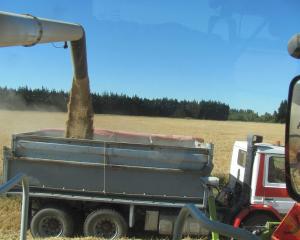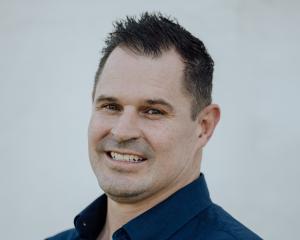
Phosphorus Mitigation Project manager John Paterson said detainment bunds had been proven to work in the free-draining soil of farms in Rotorua and now the focus included heavier soil on a farm in West Otago.
Mr Paterson was born and raised in East Chatton near Gore and now lives in Rotorua.
The trial results so far in Rotorua show the bunds could remove about 60% of both phosphorus and sediment in stormwater intercepted by bunds preventing phosphorus and sediment from reaching downstream waterways .
A bund trial had been installed in the clay soil of the Body family farm near Tapanui.
The project’s main funder was the Ministry for Primary Industries, providing $1.7 million of funding through its Sustainable Land Management and Climate Change fund.
The construction of the bund in West Otago cost about $30,000 and the Otago Regional Council paid a third of it.
"The current ongoing research work will gauge if the exciting performance of detainment bunds on free draining soils can be repeated in clay soils with more impeded drainage rates."
The National Institute of Water and Atmospheric Research had been contracted to install technology at the bund and do field samples and analysis.
Top soil and grass seed had been spread around the bund and it was expected to be operational in mid-April this year.
A ponding area around the bund would be able to treat more than 4000cu m of stormwater from a 30ha trial site on the farm.
Stormwater would stay at the bund for up to three days before the farmer "pulls the plug to get his paddock back".
A bund did not result in any loss of land or production, unlike riparian planting or the construction of a wetland.
The biggest impact on controlling phosphorus and sediment loss from pastoral farms was the good management practices of farmers to minimise that contaminant mobilisation in the first place, he said.

The bund offered a final opportunity to intercept and treat the rainfall runoff water before it left the farm.
"If every farm put this sort of structure wherever they could, they would be restoring the hydrology of their farm to pre-development times."
There was no plans to promote the installation of more bunds in the South until three years of trial work had been completed and it was proven to work on clay soil types.
"The purpose of the work at Al’s is to get the facts and know what the benefits are."
Bunds were being trialled on five sites in New Zealand including West Otago, Rotorua and Kaipara Harbour on the north western side of the North Island .
The project was established in 2016 and was governed by a group of farmers.
"It’s by farmers for farmers."
Farmer Al Body had "embraced" the project, Mr Paterson said.
Mr Body said he had always been conscious of trapping sediment in stormwater on his family’s farm.
His family had built five smaller, more affordable bunds on the farm, treating up to 60cum of stormwater per hectare.
"The only real difference to what John was proposing was a much, much larger volume."
He was curious to see the data on how the big bund was impacting water quality on the farm.
"The numbers won’t lie."















